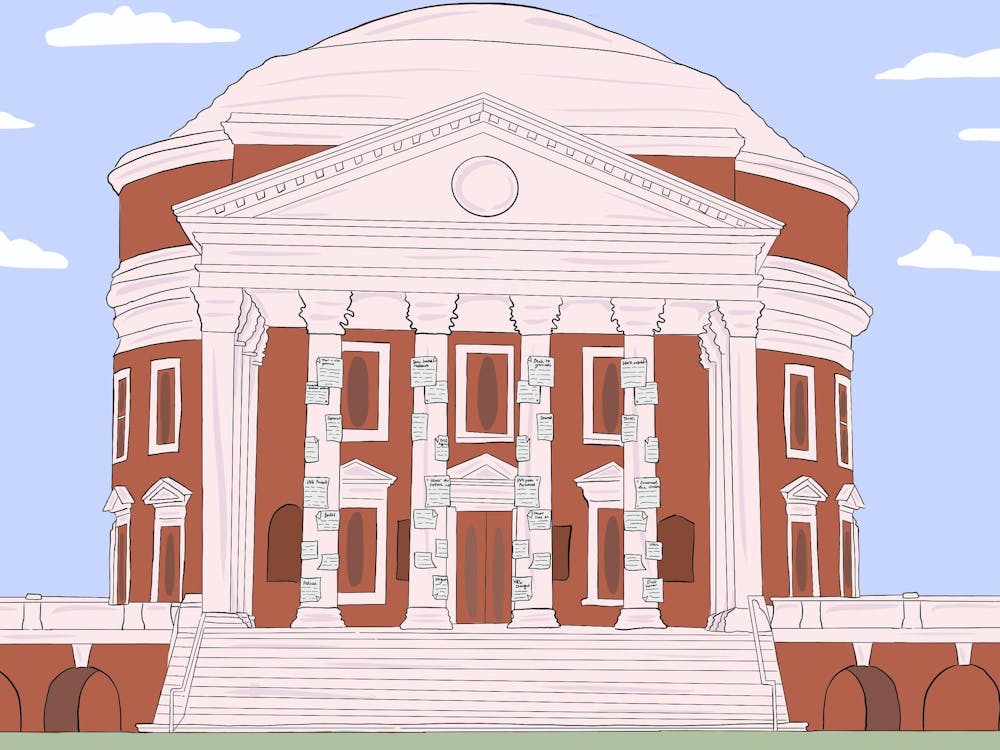Where do you go first to get your news? In the wake of any breaking news event, individuals often rush to social media for minute-by-minute updates. However, these sites are often a center for misinformation, including in Charlottesville. Take the acrimonious departure of former University President Jim Ryan, and the ensuing social media firestorm, where individuals made outlandish claims, such as labelling Ryan as a supporter of “Marxism [and] a Pagan Muslim Apologist.” These claims are not only false, but dangerous in how they can polarize individuals off of false premises. As our lives become increasingly digital, students must understand the inherent dangers of misinformation in the social media ecosystem, along with its downstream consequences, such as increased partisanship and a decrease in trust among communities.
Educators can and should play a big role in ensuring that students can identify misinformation. To that end, the University would be wise to provide students with a “crash course” class designed explicitly for this purpose. Among other things, higher education entails a deeper and more rigorous level of research and analysis than students are accustomed to, and this class can ensure that students learn how to discern accuracy and honesty in every endeavor — a skill that will prove invaluable over the course of their time at the University.
There are many frameworks the University could use to implement this course. Professors could begin the course with an overview of the history of misinformation and, similarly, propaganda. Rhetorical analysis of historical propaganda pieces would serve to contextualize the usage of misinformation as a tool of sociopolitical control, among other uses. Following this introduction, professors could lead a bootcamp on the identification of misinformation, as well as strategies to combat it.
One such strategy would be inoculation. According to the American Psychological Association, inoculation, or repeated exposure to low-stakes misinformation in an educational setting, is a powerful tool that can be used to help combat misinformation. In this way, professors could present tailored examples of misinformation to students, and then explain why the information is inaccurate and what tactic of misinformation it uses. In this way, the principles of inoculation can train students to spot misinformation.
After presenting a variety of strategies, including inoculation, professors can utilize a plethora of exercises encouraging students to interact with digital information sources, and draw their own conclusions about the validity of a claim. The media literacy course can ultimately conclude by focusing on the implications of misinformation, both in today’s world and what the future may hold.
The University would not be the first to have such a program. Washington University offers a program to education majors and teachers, aimed at providing them with frameworks for teaching media literacy in their own classrooms. Several other institutions have similar programs, such as the University of Florida and Arizona State University’s degree in Digital Media Literacy. These programs help to ensure that students become active and informed participants in discussions and debate, rather than subjects to misinformation.
The compulsory nature of a similar program at our school, in tandem with the world-class educators the University possesses, can ensure that the University is something of a trailblazer, being one of the first to recognize the necessity of media literacy in the information age. Students would be transformed into conscientious consumers of digital media, allowing them to glean insights not only from the information itself, but from the metadata of said content, such as information on the publisher. And, as more and more students benefit from these media literacy programs, our society will be filled with an informed populace capable of countering the increase in partisanship and distrust that media misinformation causes.
This proposal is imperfect, and not without objections. An increasingly politicized Board of Visitors raises concerns about the weaponization of such a program, and care must be taken to ensure that what is labelled as misinformation is academically reviewed rather than politically dictated. Perfectly valid complaints may be voiced about a reduction in student autonomy with the addition of yet another mandatory class for first-years. With that being said, critical thinking and careful analysis are hallmarks of a liberal education, and the University claims to offer one of the best.
Thomas Jefferson was a man who, above all else, valued the truth. As such, the University has an obligation to ensure that it produces students who are capable of parsing through the quagmire of data on the internet and then be able to objectively differentiate between credible and uncredible information. If the University wishes to continue to uphold Mr. Jefferson’s timeless founding ideals, they must recognize the necessity of truth, and continue to create students who tirelessly seek it out, even in an era where it is more difficult to find than ever.
Conall Castagno is an opinion columnist who writes about politics for The Cavalier Daily. He can be reached at opinion@cavalierdaily.com.
The opinions expressed in this column are not necessarily those of The Cavalier Daily. Columns represent the views of the author alone.







